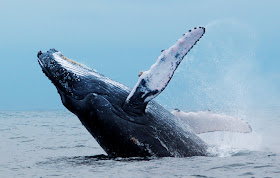 |
| Psychologist Linda Craighead, second from right, with graduate students in the Eating and Weight Concerns Center at Emory, with a "hunger meter" chart. Photo by Todd Deveau. |
Eating disorders are paradoxical: they are about control more than food, yet thoughts of food pervade almost every waking moment. The substance being abused can’t simply be avoided like drugs or alcohol.
The intent is often to achieve “the perfect body,” but the disorders actually harm, disfigure, even kill. And this all takes place within a culture that simultaneously glorifies eating well and being thin.
No wonder, then, that hot spots for eating disorders include universities, high-level performance sports, and the entertainment industry.
“Southern private schools do have a slightly higher rate, but all universities have more than we would like,” says Emory psychologist Linda Craighead, who specializes in eating disorders and weight concerns and is the author of The Appetite Awareness Workbook: How to Listen to Your Body and Overcome Binge Eating, Overeating and Obsession with Food. “Eating disorders cut across socioeconomic levels and all ethnicities.”
The most severe are anorexia and bulimia—the National Eating Disorder Association estimates that 10 million women and 1 million men in the U.S. struggle with one of these disorders—while millions more engage in binge eating or compulsive overeating. “At Emory’s counseling center, we see a lot of students, even medical students, with eating disorders,” Craighead says.
A person with anorexia typically falls below a certain weight—for adults, a body mass index of 18.5. Their diet is usually very restricted and often vegetarian, Craighead says.
“In many cases,” she says, “people who start with anorexia move on to binging and purging because the biological pressure to eat is so strong it breaks through now and then.”
Bulimia traditionally involves binging followed by a “maladaptive compensatory behavior”— mostly vomiting, but this can also take the form of laxatives, over-exercising, or fasting. “Most bulimics are close to normal weight, since purging is actually one of the least effective ways to compensate—about half the food stays in the body. So we try to teach bulimics in recovery to learn to be satisfied with just eating half the amount.”
Assistant Professor of Family and Preventive Medicine Teresa Beck treats patients with eating disorders and trains residents with a personal perspective. “I developed an eating disorder during medical school and hid it from my family for six years,” she says. “Mine started, just like most, with dieting to lose a few pounds. I use my experiences to help many of my patients with their own problems related to compulsive or emotional eating, obesity, poor body image, perfectionism, and all that goes along with that.”
Often, there’s a migration between all three disorders—anorexia, bulimia, and binging. “The contagion effect is huge,” says Craighead, which explains how eating disorders can run rampant through dorms and sororities. And dangerous new influences exist, like “pro-ana” groups on social media sites that glorify and offer tips about anorexia.
Health problems may not show up until middle age, and the main, irreversible consequence is bone loss. “You only have a window of time, twelve to twenty-three, to lay down all the bone that you’re going to get,” Craighead says. “You have to eat real food and have enough weight on. If your bones are fragile when you’re older, there’s no way to fix it.”
Nadine Kaslow, a professor of psychiatry at Emory and also the psychologist for the Atlanta Ballet, says eating disorders are prevalent among ballerinas. Kaslow has been involved in ballet since she was three, and says the dance culture has always supported extreme thinness.
“We used to have to wear our ideal weight and actual weight pinned to our leotards,” she says. “You weighed in once a week, and if you weren’t thin enough, you were publicly humiliated.”
It’s gotten better, says Kaslow, but “you are still reinforced for being thin, that’s just the normative expectation. A cultural shift is needed.”
Related:
Extreme beauty: Former Miss America discusses anorexia
Psychologist takes on ballet's special demons
Mirror image: iStockphoto.com





















